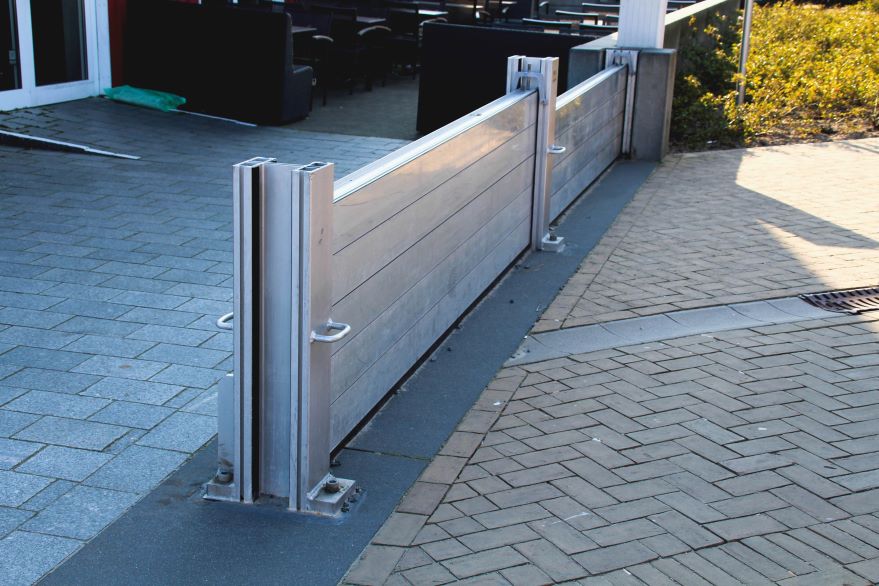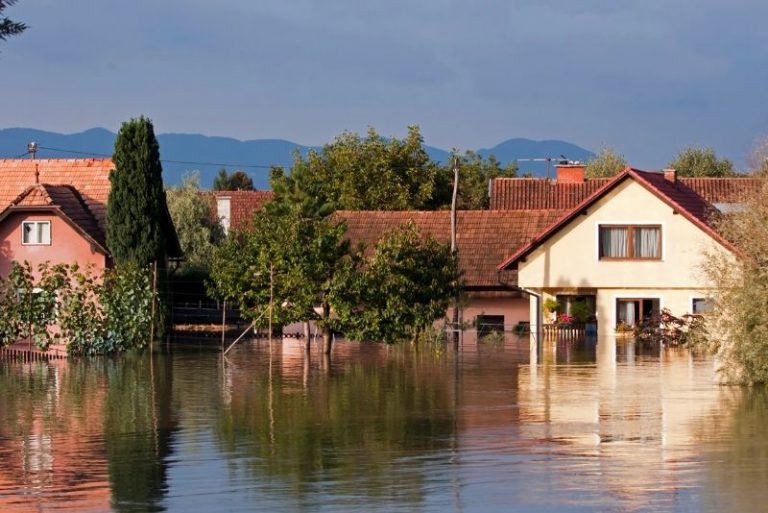Rainfall is always expected in these wintery months, but in recent years, we’ve faced a series of intense weather events, including heavy rainfall, thunderstorms, and rising river levels. The risk level for flooding is at an all-time high across the country.
With climate change driving more unpredictable and extreme weather, floods are becoming a frequent concern for homeowners. Cities and rural areas alike are being hit by severe flash floods and long-term waterlogging, with some areas experiencing several inches of rain in just a few days. Now, more than ever, understanding how to protect your home from flooding is crucial to mitigate damage and stay prepared for future storms.
Flood resilience vs flood resistance – the difference explained
Flood resistance and resilience are terms used to describe the different protections against flooding. Flood resistance describes ways of reducing the risk of water getting into your property. It often refers to construction methods/materials or installing waterproofing features, such as:
- Flood doors, flood door barriers and/or gates inside your home, on entrances and in your garden.
- Waterproof walls and fences surrounding your property.
- Repointing cracks/applying water resistant paints and coatings.
- Self-closing air bricks or air brick covers.
- Consider a ‘flood skirt’ – a material system that can be pulled up around your building.
- Non-return valves on drains and pipes to prevent sewage flowing back through pipes.

Additionally, flood resilience describes what you can do to minimise the level of damage to your property if water does get in. Using resilient materials, you can minimise the extent of actual damage and reduce the drying time after a flood. So, you can get back to living ‘normally’ again, once the water subsides:
- Stainless steel, plastic or solid wood, water-resistant materials that suit the kitchen or bathroom.
- Treated wood, tiles or concrete to replace carpets and timber floors.
- Raise the floor level and height of the threshold to your property entrance.
- Move electrical sockets higher than the water could reach.
- Keep sacrificial furniture such as a-frames or trestle tables that you can put important items on top of.
- Raise white goods off the ground with concrete blocks.
- Move valuable items upstairs or onto high shelves when you’re expecting flooding.
- Prepare your ‘flood cupboard’ with crates, bricks, pumps, welly boots/raiders, a chemical toilet.
Low-cost flood protections
When a flood is on the horizon, our first instinct is to protect our homes from the devastating effects it can bring. But what if flood barriers or doors are beyond our budget? Or worse, what if we’re still waiting for them to be installed as the flood approaches? While these tips might not be as effective as certified flood barriers, they can still help minimise the amount of water entering your home.
First and foremost, sign up to receive alerts and flood warnings from the Environment Agency. It’s completely free, and will give you advance warning. Also, pay attention to weather warnings from the Met Office or local radio when heavy rain starts. You’ll need to act fast, so having a flood plan in place is vital. You should decide ahead of time what items you’ll move to safety first.
Plastic boxes with lids are useful, as you can package important items inside and store them upstairs. If you live in a bungalow, see if a friend or relative can look after sentimental items for you – and add this to your flood plan. Keep things on high shelves or on top of wardrobes to protect them from water damage. You can also fold your curtains over the rail or tie them in a knot, off the ground.

Flood Mary, a consultancy led by Mary Dhonau, who has personal experience of flooding at home, even suggests putting Wellington boots or plastic bins on wooden table legs, to protect them. And if you have airbricks, wide aluminium tape over the top can stop water getting inside.
Why it’s important to be protected
This all sounds like a lot of work. But being flooded is intense situation to deal with, so it’s well worth the time and effort beforehand to prepare.
On average, you could be out of your home for nine months after being flooded. Having a plan, precautions and preventions in place will help you cope, and potentially reduce this impact time. It can also affect the price of your insurance.
Finding cover if you’re in a flood-risk area can be more challenging, as insurers will consider the area’s flood history, locality and the features of a property to determine the risk profile. And they can also take into account flood resilience and resistance measures.
And by talking to a specialist insurance broker, such as Howden Insurance, the process should be much smoother than having to search around and compare quotes yourself. Plus, with their insurance expertise, they can help you with the information insurers will want to know and find you the right advice and guidance for specialist cover. Essentially, at Howden we do the heavy lifting for you!
Find your nearest Howden Insurance branch, and speak to our team in person or over the phone.
Sources: Flood Mary, BBC News, Met Office.
You could also read:
This is a marketing blog by Howden.

